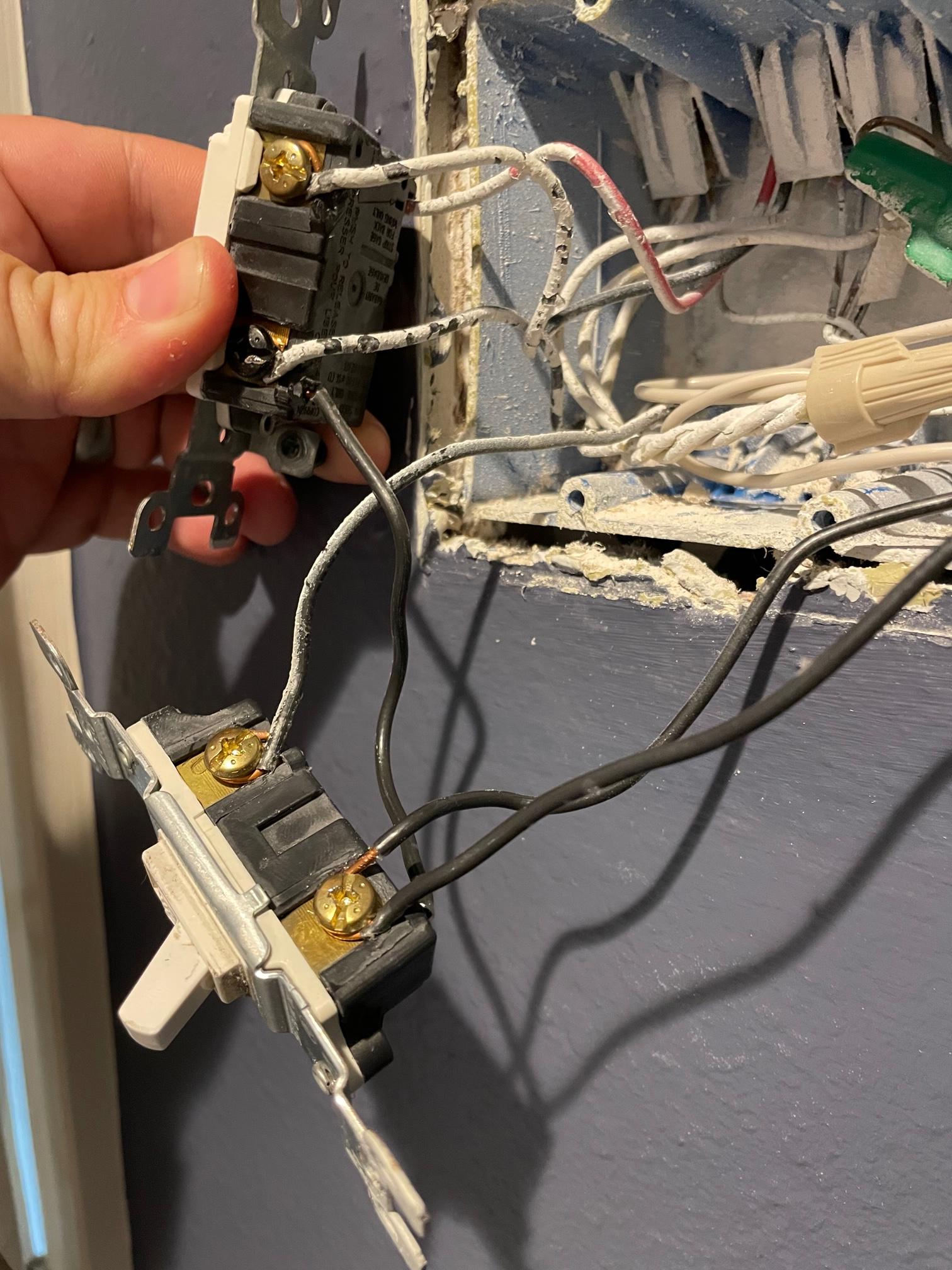So, I purchased two new Kasa light switches to replace two standard switches in a 3-gang box and encountered a lot more than I was expecting. Almost every wire looks to be black, which is not what I expected at all. I feel moderately handy and have swapped out several other switches and outlets in the house, but this one is really stumping me.
The far left switch has a red wire on the top left (I'm assuming it's going back to the wall since it's definitely a three way), then a wire coming from the wall into the top right screw, then another one from the wall going to the bottom right screw. I have no idea what either of those two screwed wires are (load vs. line).
Where it gets fun is that there's ANOTHER wire plugged into the back of the switch that leads into the back of the second switch, with a wire screwed into the top right coming to/going from the wall, and another wire screwed into the bottom right to/from the wall – but THAT wire loops around said screw before plugging into the bottom of the third switch. There is also a wire coming out of the top on the back of the switch that goes to/from the wall.
Taking a step back, this is kind of a mess (to me – this may be normal for electricians!)
So, where it really gets fun is that I'm trying to figure out what goes where in the back of these Kasa switches. One is a three way (replacing the middle switch which I know isn't a three way switch) and the other is a dimming switch (replacing the far right switch).
So, as of now, I feel pretty stuck. I'm going to put all three back in their places and turn power back on, but wow.







